Apoplex (Schlaganfall)
Definition
Bei einem Schlaganfall (Apoplex) wird ein Bereich des Gehirns nicht mehr mit Sauerstoff und Nährstoffen versorgt. Dies erfolgt aufgrund eines Gefäßverschlusses in etwa 80 % der Fälle. Zu diesem Verschluss kommt es entweder durch eine Verkalkung der Hirngefäße (Arteriosklerose) oder dadurch, dass ein Blutgerinnsel (Embolus) in die Hirnregion „geschwemmt“ wird und das Gefäß verstopft.
Ein ebenfalls häufiger Grund für die Mangelversorgung ist eine Hirnblutung. Dies kann entweder durch ein geplatztes Gefäß geschehen oder durch eine Blutung zwischen den Hirnhäuten.
Es gibt in seltenen Fällen auch einen kindlichen Schlaganfall.
Risikofaktoren
Es gibt viele Dinge, die einen Schlaganfall begünstigen. Einige davon lassen sich nicht durch uns beeinflussen, dazu gehören zum Beispiel genetische Veranlagung, und ein voriger Schlaganfall (40 % der Menschen mit einem Schlaganfall erleiden innerhalb von 10 Jahren einen weiteren). Mehr als 80 Prozent der Patienten sind älter als 60 Jahre.
Herzkrankheiten, insbesondere Vorhofflimmern und Herzklappenerkrankungen stellen ebenfalls einen Risikofaktor dar. Es kann hierbei passieren, dass das Blut nicht ideal durch das Herz strömt, wodurch es zu Blutgerinnseln kommen kann. Wenn diese in die Gefäße des Gehirns gelangen, kann dies zu einem Schlaganfall führen.
Die Mehrzahl der Risikofaktoren lässt sich jedoch beeinflussen. Eine Vielzahl dieser ist für eine Verengung der Gefäße verantwortlich. Viele dieser Faktoren begünstigen sich auch gegenseitig.
- Ein ungesunder Lebensstil ist oftmals der Anfangspunkt für viele der folgenden Erkrankungen oder schließt schlechte Gewohnheiten ein, die als Risikofaktoren genannt werden. Das Gleiche gilt für Übergewicht.
- Diabetes mellitus: durch einen dauerhaft hohen Blutzucker kommt es zu einer Schädigung der Gefäße, was zu einer Verdickung der Gefäßwände führt.
- Bluthochdruck (Hypertonie) führt zu einer Schädigung der Gefäße, was wiederum das Risiko für Ablagerungen an den Gefäßwänden erhöht. Es gilt, je höher der Blutdruck, desto wahrscheinlicher ist ein Schlaganfall.
- Cholesterin und andere Blutfette sind Teil der Ablagerungen an den Gefäßwänden.
- Rauchen – je mehr Zigaretten pro Tag und je mehr Jahre, desto höher das Schlaganfall-Risiko
- Rauchen fördert Fettstoffwechsel-Störungen
- Die Sauerstoffmenge im Blut verringert sich, wodurch das Gehirn dem Knochenmark signalisiert, mehr rote Blutkörperchen für den Sauerstofftransport zu produzieren. Dadurch wird das Blut dicker und fließt schlechter durch die bereits verengten Gefäße.
- Die Gerinnungsbereitschaft steigt, was zu Blutgerinnseln führt, die wiederum das Gefäß verstopfen können.
- Auch Hormon Therapien stellen einen Risikofaktor dar.
- Durch einen zu hohen Alkoholkonsum (egal, ob regelmäßig oder selten) steigt die Gefahr einer Hirnblutung.
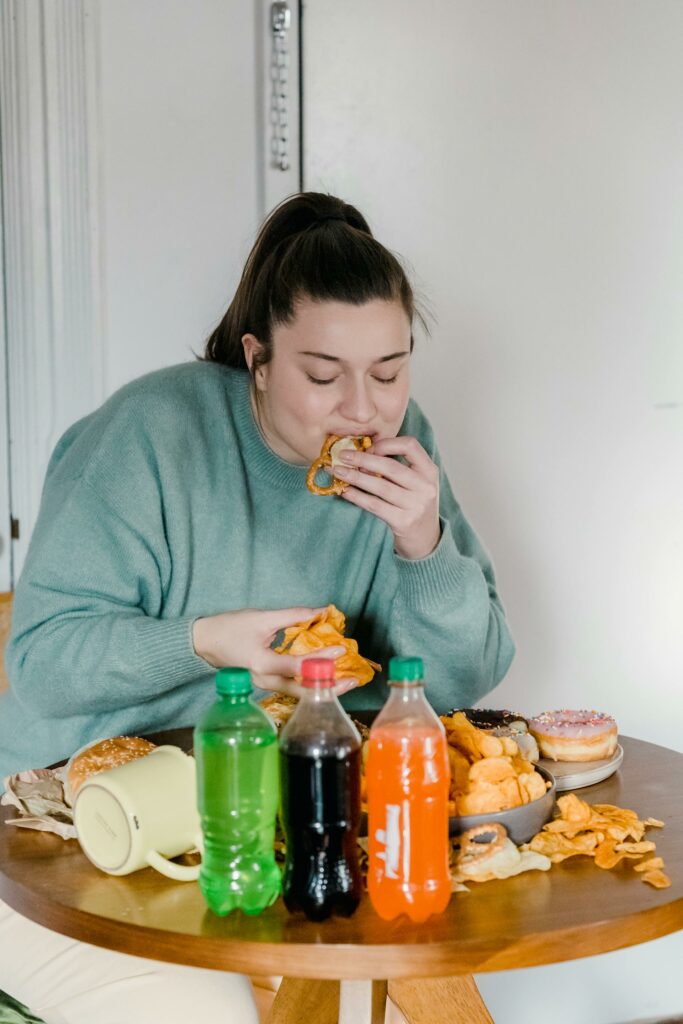

Symptome
- Lähmungs- und Taubheits-Gefühle in einer Körperhälfte,
- Symptome dafür können z. B. sein, dass der Mundwinkel/ das Augenlid an einer Seite hängt.
- plötzliche Sehstörungen
- Der Patient sieht z. B. verschwommen, Doppelbilder oder hat einen plötzlichen, vorübergehender Sehverlust.
- Sprach-Störungen,
- akute und starke Kopfschmerzen,
- akuter Schwindel, Gangunsicherheit
- Sprech-Störungen
- Diese äußern sich z. B. durch verwaschene oder lallende Sprache,
- verdrehte Buchstaben
- Oder der Betroffene kann nicht mehr verstehen, was gesagt wird.
- Schluckstörungen
- Desorientierung
- etc.
Erste Hilfe bei einem Verdacht
Zeit ist alles, “time is brain” oder “Zeit ist Hirn” – denn je schneller mit der Therapie begonnen wird, desto kürzer liegt die Unterversorgung vor, desto weniger Gewebe stirbt ab.
Der sogenannte “FAST-Test” hilft auch dem Laien schnell zu prüfen, ob jemand möglicherweise gerade einen Schlaganfall erleidet:
- Face (Gesicht)
- Betroffenen darum bitten zu lächeln.
- Kein beidseitiges Lächeln? – Könnte auf einen Schlaganfall hindeuten.
- Arms (Arme)
- Patienten darum bitten beide Arme nach vorne zu strecken, Handflächen nach oben.
- Nicht seitengleich? – Kann auf einen Schlaganfall hindeuten.
- Speech (Sprache)
- Patienten darum bitten einen einfach Satz nachzusprechen
- Nicht möglich oder verschwommene Aussprache? – Risiko eines Schlaganfalls.
- Time (Zeit): Sofort den Notruf wählen!
- Person nicht alleine lassen, beobachten und beruhigen
- Kein Essen oder Trinken anbieten! – Das Schlucken kann gestört sein
- Person bei Bewusstsein? – Oberkörper (ca. 30°) erhöht lagern
- Erbrechen oder Bewusstlosigkeit? – stabile Seitenlage, regelmäßig Puls und Atmung kontrollieren
- Kein(e) Puls/Atmung? – Person auf den Rücken drehen(, auf harten Untergrund, z. B. Fußboden) und Wiederbelebungsmaßnahmen sofort beginnen
- Beengende Kleidung öffnen, ggf. für frische Luft sorgen
- Rettungsdienst Symptome, Vorerkrankungen, Telefonnummer von Angehörigen und im besten Fall Medikamentenplan & Uhrzeit des Auftretens der ersten Symptome

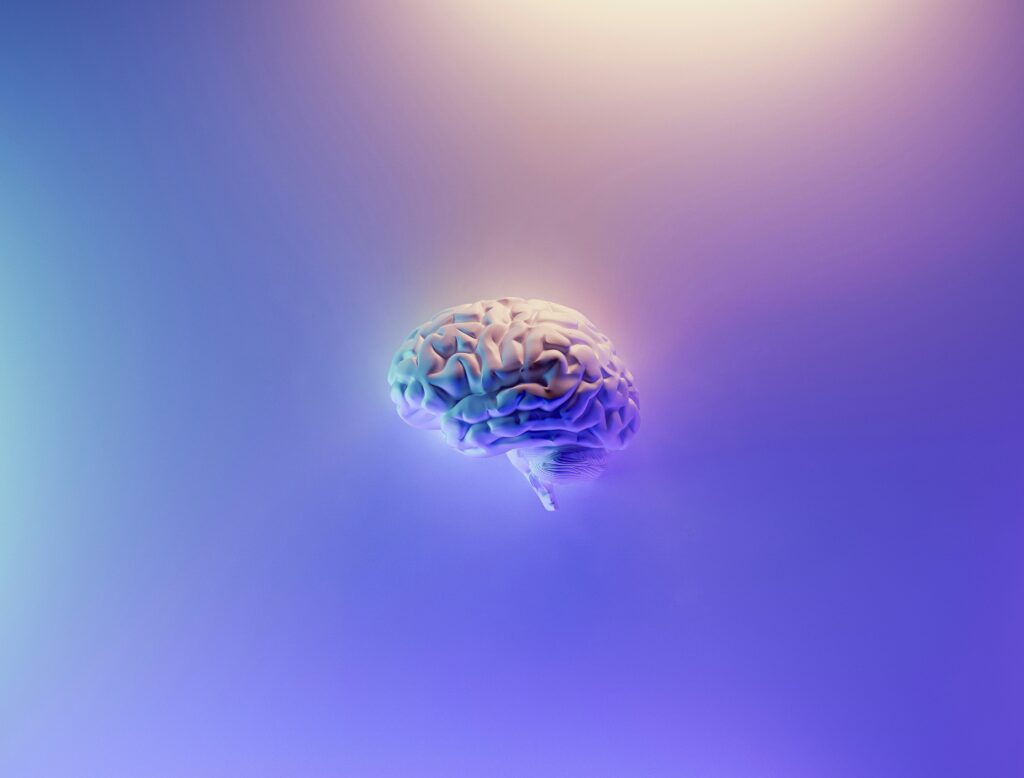
“Mini-Schlaganfall”
Bei der im Volksmund als “Mini-Schlaganfall” bezeichneten Symptomatik, handelt es sich um eine vorübergehende Durchblutungsstörung im Gehirn. Sie ist ein frühes Warnzeichen für einen Schlaganfall und entsteht meist durch ein winziges Blutgerinnsel. Symptome sind vor allem:
- vorübergehenden Sprach- oder Seh-Störungen
- Kurzzeitige Schwäche, Lähmung oder Taubheits-Gefühl in einer Körperhälfte
- Vorrübergehende Verwirrtheit/Bewusstseinsstörung
In der Regel erscheint die Symptomatik plötzlich und verschwindet nach einigen Minuten oder wenigen Stunden wieder. Es ist von großer Bedeutung, dass ein Arzt aufgesucht wird, um einen “echten” Schlaganfall zu verhindern.
Folgen, Verlauf & Prognose
Ein Schlaganfall kann tödlich verlaufen. Der Schlaganfall ist neben dem Herzinfarkt und Krebs-Erkrankungen eine der häufigsten Todesursachen. Fünf Jahre nach einem Anfall leben noch etwa 55 % derjenigen, die einen Schlaganfall erlitten haben.
Von den Betroffenen, die nach dem ersten Jahr noch leben, ist etwa die Hälfte dauerhaft auf fremde Hilfe angewiesen. Es verbleiben oftmals Lähmungen, Sprachstörungen und/oder mentale Behinderungen.
Ein kindlicher Schlaganfall ist oft vollständig heilbar.
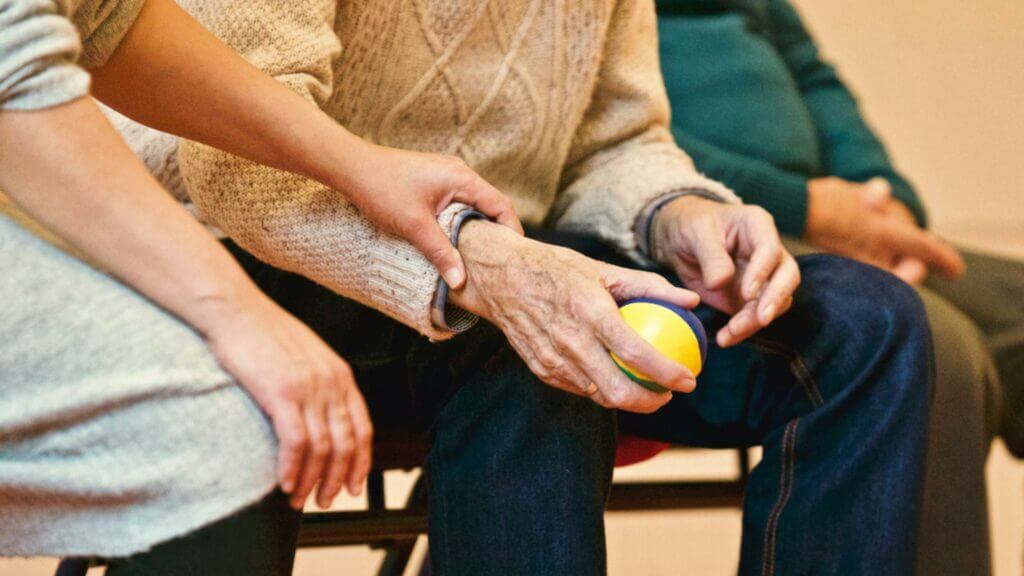
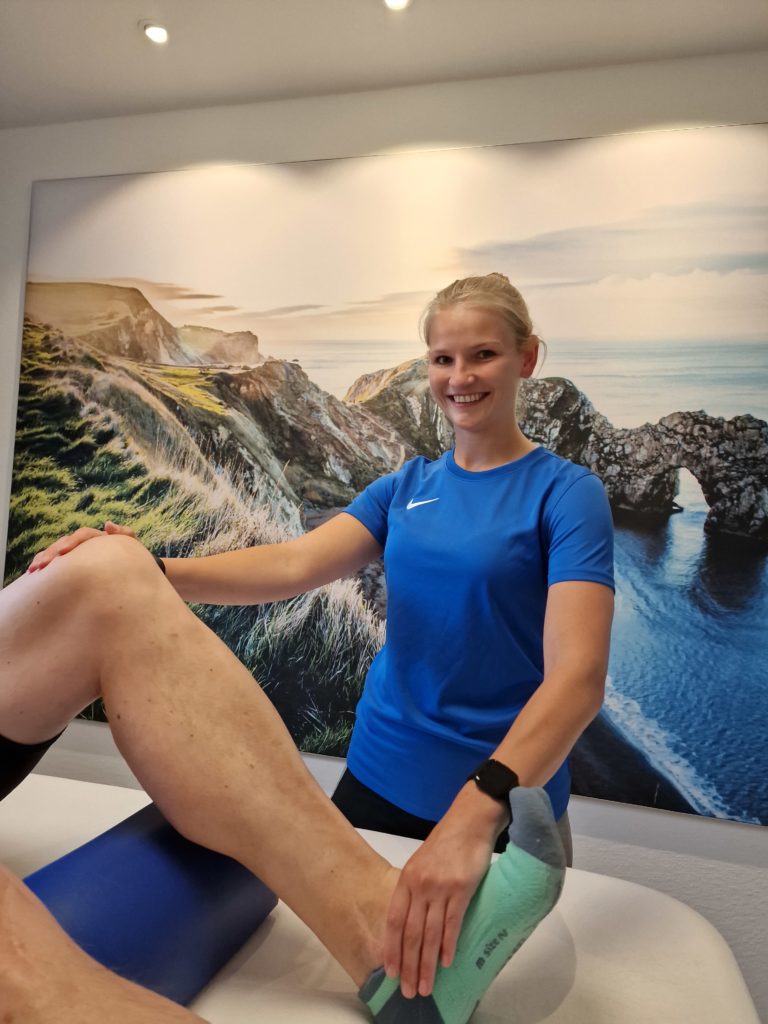
Nach dem Schlaganfall
Die Rehabilitation nach einem Schlaganfall findet in der Regel als eine Kombination verschiedener Maßnahmen statt:
- Physiotherapie
- unterstützt Muskelaufbau, Körperhaltung, Bewegungsabläufe, Koordination, Körperwahrnehmung und Gleichgewichtssinn.
- Darüber hinaus können Lähmungen und Fehlhaltungen verbessert und beseitigt werden. Ebenso werden Patienten wieder mobiler und selbstständiger.
- Logopädie
- beinhaltet Sprechübungen und
- behandelt Schluckstörungen.
- Dies hilft dabei, Lungenentzündungen vorzubeugen.
- Ergotherapie
- unterstützt Betroffene in ihrer Alltagsbewältigung
- und hilft dabei, ein möglichst selbstständiges Leben führen zu können.
- Krafttraining kann ebenfalls dabei unterstützen und zeigt Studien zufolge positive Effekte in der Rehabilitation. Hier ist qualifiziertes Fachpersonal nötig, um die angemessene Dosierung zu gewährleisten. Ein zu stark bemessenes Training kann die Lähmung forcieren.
Vorbeugung eines weiteren Schlaganfalls
Um einen erneuten Schlaganfall verhindern zu können, müssen bestehende Ursachen und Risikofaktoren beseitigt und reduziert werden. Hierbei unterstützen verschiedene Medikamente (z. B. Blutverdünner, Blutdrucksenker, Cholesterin-Senker). Der Abbau von Übergewicht, regelmäßige Bewegung, eine ausgewogene Ernährung mit wenig tierischen Fetten und der Verzicht auf Nikotin und Alkohol sind wichtige Pfeiler der Prävention.
Prävention
Es ist von ungemeiner Bedeutung zu verhindern, dass es überhaupt zu einem Schlaganfall kommt, schließlich möchte keiner von uns frühzeitig eine mentale und/oder physische Behinderung haben, wenn diese vermeidbar ist.
Regelmäßiger Sport und eine gesunde Ernährung sind wichtige Stützpfeiler dieser Prävention. Insbesondere Kraftsport ist ein wichtig, um einige der Risikofaktoren, die einen Schlaganfall begünstigen, zu minimieren. Eine Unterstützung durch Ausdauersport kann darüber hinaus sinnvoll sein, um das Risiko weiter zu verringern.
Doch auch nach einem Schlaganfall helfen diese Maßnahmen dabei, einen weiteren Schlaganfall zu verhindern.
Vereinbare einfach ein unverbindliches Beratungsgespräch und erfahre, welche Möglichkeiten du bei uns hast, um das beste für deine Gesundheit zu erreichen.
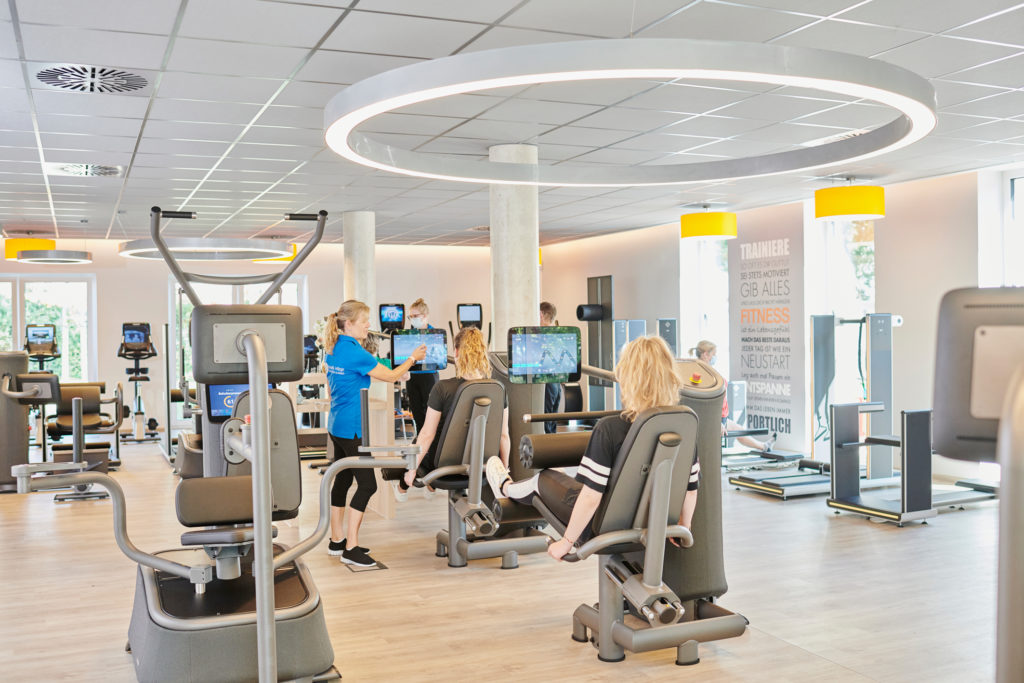
Jeder unserer Artikel wurde außerdem von unseren Experten kontrolliert.
Schlaganfall: Ursachen, Warnzeichen, Therapie – NetDoktor.de
Schlaganfall (Apoplex) | Apotheken Umschau
Schlaganfall: Symptome, Ursachen, Behandlung, Vorbeugen
Schlaganfall (Apoplex): – verstehen, erkennen, helfen | ZBI Gruppe
S3-Leitlinie Empfehlungen zur Therapie von Patienten mit Schlaganfall – Living Guideline
Resistance training in stroke rehabilitation: systematic review and meta-analysis
Lebenserwartung und Prognose nach einem Schlaganfall – Schlaganfallbegleitung
Kontakt
Hohe Luft 10, 27404 Zeven
04281 / 2180
© Copyright 2024. Physioteam Höltge - Gesundheitszentrum. All rights reserved.
Made with ❤ by Lynn Höltge
